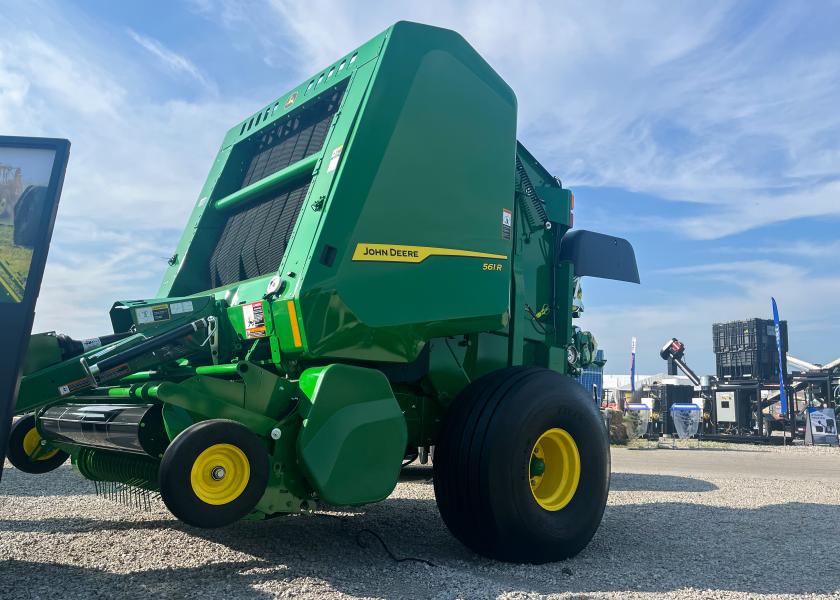John Deere 1 Series Round Baler Boosts Capacity and Offers New Tech

John Deere introduces the 1 Series Round Baler featuring three models and eight balers.
"Customers said reliability, serviceability and productivity were three important factors for them when considering the purchase of a new round baler," says Chase Milem, marketing manager for John Deere. "We took what farmers liked most about our previous round balers and added new features to boost their baling capacity and new technology to better help farmers make informed agronomic decisions based on real-time data."
Innovations on the Series 1 include an 8” G5e display with an “easy-to-learn” interface and three pickup options:
- The "E" model is equipped with a regular pickup.
- The "M" model is equipped with MegaWide Plus pickup.
- The "R" model has a high-capacity pickup or a high-capacity and precutting feeding system.
Based on John Deere’s internal testing, the high-capacity pickup was able to pick up and feed crop with up to 33% increased capacity compared with previous models.
Data-Driven Baling
John Deere’s Bale Doc technology documents bale moisture and weight in near real-time to analyze yield trends and nutrient replenishment after cutting. The data syncs with John Deere Operations Center and allows farmers to make informed decisions about nutrient management and fertilizer costs.
Automation Improves Efficiency
Integrated Baler Automation technology automates gate cycle functions, reduces operator fatigue and minimizes downtime.
1 Series Balers also include the following options:
- Net-Lift assist, which creates a 90% reduction in lifting effort as the connecting linkage attaches to the net wrap handles and the net wrap roll is moved into position.
- Net Lighting illuminates the net wrap and wrapping components, making it easier to reload in low-light conditions.
- A Preservative System uses a tank, sensors, controller and distribution system to ensure the right amount of preservative is applied to each bale.







